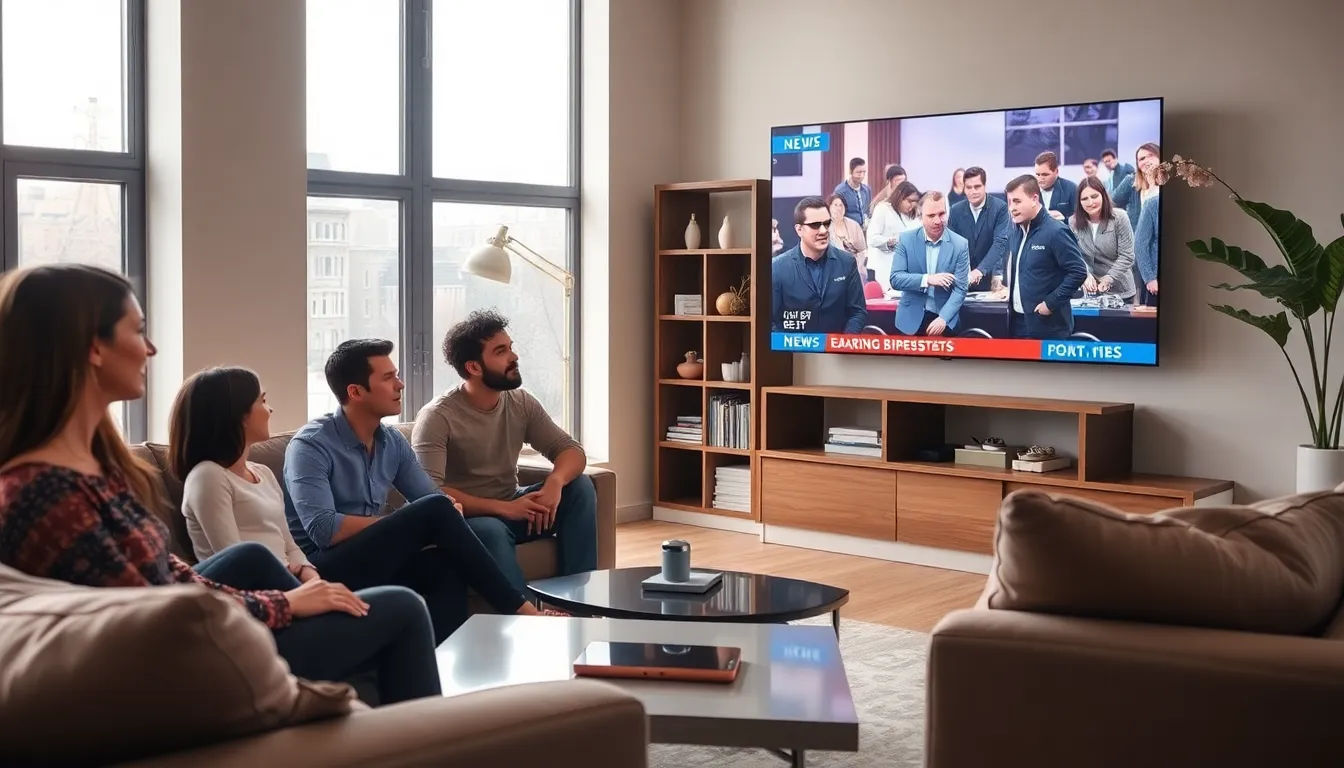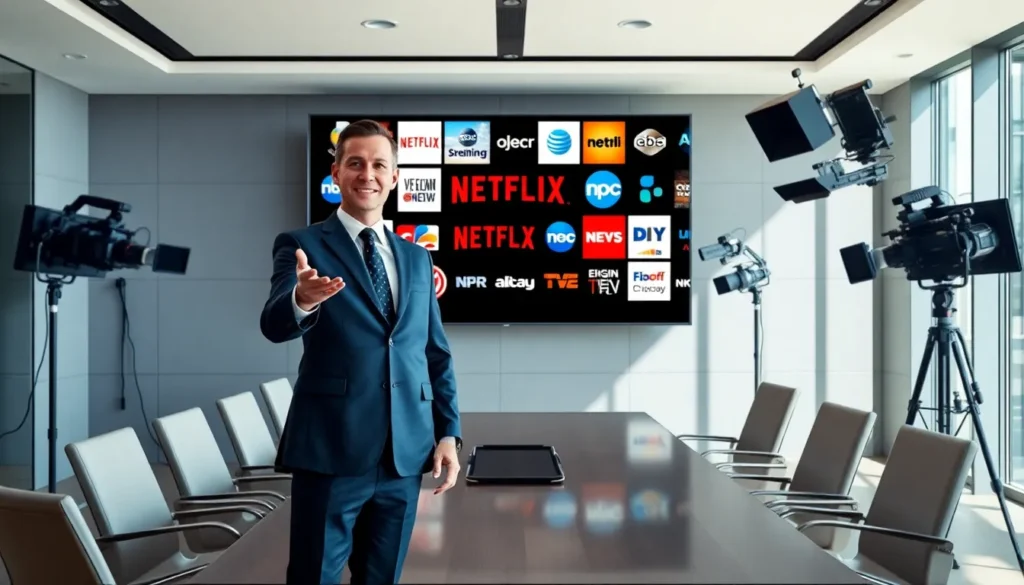Table of Contents
ToggleBroadcast media isn’t just a term thrown around during an awkward family dinner: it’s a crucial part of how information zips around the globe. So, why should you care? Because whether it’s catching your favorite sitcom on TV, tuning into that podcast while half-asleep, or streaming live news coverage, broadcast media shapes how we digest information every day. Buckle up, because we’re about to explore different types of broadcast media that keep us informed, entertained, and sometimes even a little confused.
Television Broadcasts

Television broadcasts remain a staple of broadcast media, bringing visual storytelling into living rooms worldwide. This format can deliver everything from gripping news to charming commercials that linger long after they air. Different platforms cater to various audiences, with cable networks like CNN and NBC focusing on news and entertainment, while niche channels tackle everything from cooking to home repair. But the evolution of TV is interesting, who hasn’t binge-watched a series on streaming sites? Live television still holds its ground, especially for events like award shows and sporting events, where shared viewing experiences amplify the excitement.
Radio Broadcasts
While television grabs the visual attention, radio broadcasts maintain a dedicated following, particularly in remote areas. This form of media appeals to those who enjoy background noise while commuting or working. Think about it: there’s something nostalgic about a local DJ playing the latest hits or those late-night talk shows sparking discussions that linger long after the broadcast ends. Stations themselves can vary significantly, from enormous networks to quaint community-operated stations. Each brings its own flavor, serving different demographics and interests. Plus, with the rise of podcasting, radio’s influence morphs, finding new avenues for compelling storytelling.
Streaming Platforms
In this digital age, streaming platforms have swiftly climbed to become a juggernaut of broadcast media. Gone are the days of rigid schedules. Now, viewers have the power to binge entire series, watch movies at their leisure, and even tune in for live broadcasts with just a click. Platforms like Netflix, Hulu, and Disney+ provide vast libraries that span genres, catering to every individual taste. Also, live sports and news coverage have also found a home here, successfully merging traditional broadcasting with online convenience. This shift reflects how audiences have evolved: they now seek control over what they consume, creating a personalized viewing experience.
Public Broadcast Media
Public broadcast media plays a pivotal role in informing and educating the public without the taint of corporate advertising influence. Organizations like PBS in the U.S. or the BBC in the U.K. exemplify how such media can cover educational programs, documentaries, and enriching cultural content. This type of media often focuses on issues that may be overlooked in commercial broadcasts, such as local history or community events. By prioritizing content over profit, public broadcasters maintain a unique position, providing a space for diversity and inclusion, a needed voice in the cacophony of mainstream media.
Regional And Local Broadcasts
Regional and local broadcasts hone in on hyper-local content, addressing community needs and interests that broader platforms may miss. Local news channels report on everything from school events to municipal meetings, giving communities a voice. People often rely on these broadcasts for important information that directly affects their lives. Imagine hearing about severe weather alerts that could impact your small town: that’s where these broadcasts shine. They create a sense of belonging and connectedness, rendering them indispensable. Whether it’s a local radio station or a regional TV channel, they keep community spirit alive.
The Role Of Digital Broadcast Media
As technology advances, so does the broadcasting landscape, particularly with digital media taking center stage. Digital platforms provide a means for traditional broadcasts to reach global audiences, while also paving new paths for content creators. Blogs, vlogs, and live streams enrich the broadcasting world, allowing ordinary individuals to become the purveyors of information. This shift democratizes media, giving anyone with an internet connection a chance to share their voice and stories. It also enhances interactivity, allowing for immediate audience feedback through social media, which could eventually shape future content.




